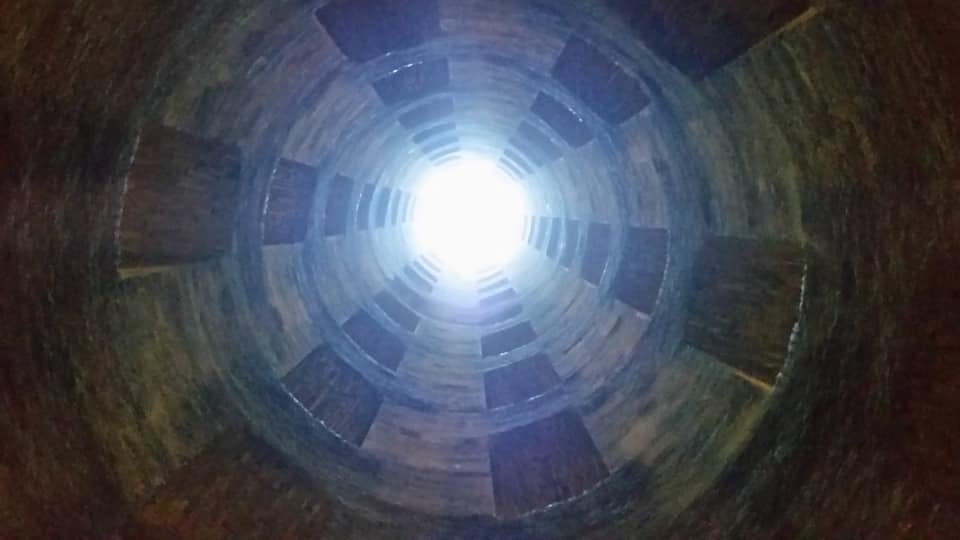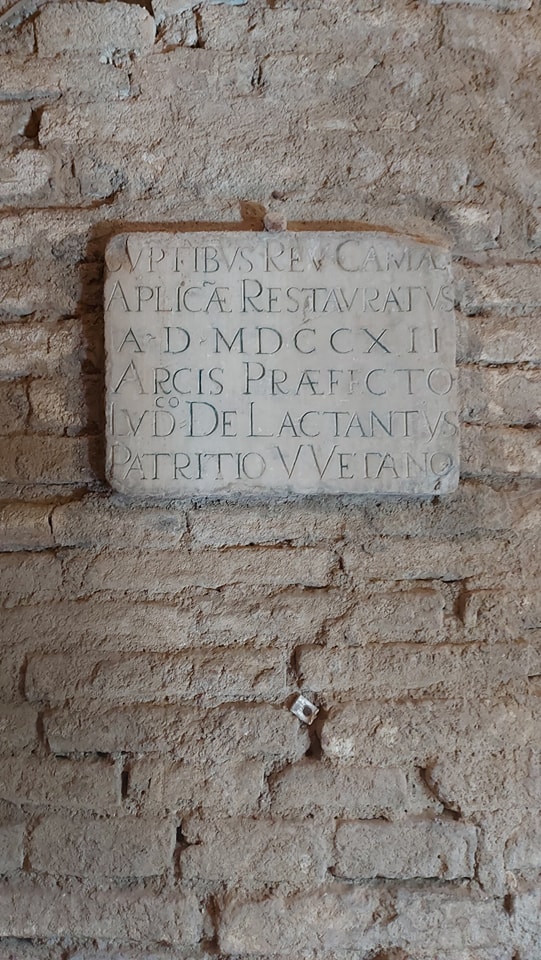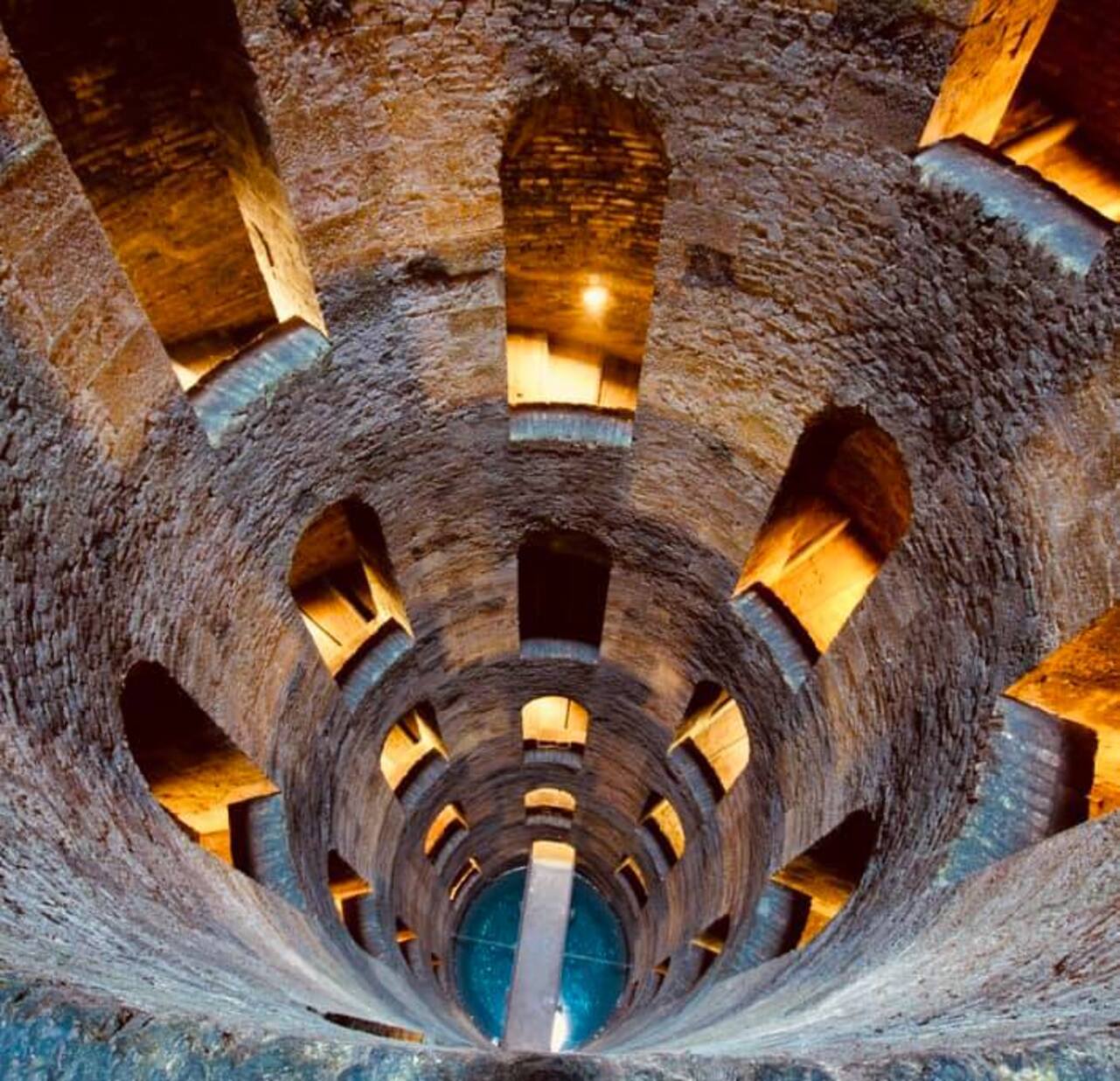The Well of San Patrizio is an architectural work made of tuff in the 500th century, in the city of Orvieto. The pontiff Clement VII he commissioned it from the Florentine Antonio da Sangallo the Younger when, on the occasion of the sack of Rome, in 1527 he took refuge in the Umbrian city. The well, which initially had to be used by the fortified fortress (the Albornoz Fortress which is located next to it), had the function of serving as a water supply in case of disaster or siege. For this reason, at the time of construction, it was called "Pozzo della Rocca". Clement VII never saw the work completed, which was completed when he sat on the papal throne Paul III Farnese. Today it is possible to visit the well, which has become a museum.

2 spiral staircases and 72 windows
The Well is also located near the Etruscan temple of Belvedere. The works for its construction ended in 1537. During Sangallo's absences, they were directed by Giovanni Battista da Cortona, while the decorative parts were by Simone Mosca. During the excavations, a pre-Etruscan tomb came to light. Built in a cylindrical shape, the well is sixty-two meters deep and thirteen meters wide. Two internal, separate and one-way spiral staircases spiral around it.

This served to prevent people with mules who went to the bottom of the well to draw water from obstructing the path of those who, after having obtained water, returned to the surface. Each staircase has two hundred and forty-eight steps that are easy to descend. The stairs receive light from seventy-two windows open in the barrel. These are enriched with elaborate and detailed decorations depicting coats of arms, human figures and floral motifs. The light decreases as you go down, until it becomes twilight. At the bottom of the barrel, a small bridge crosses the well and connects the two stairs. The water level at the bottom always remains constant thanks to the presence of a natural spring that supplies the water and an emissary that drains the excess water.

The outside
The external part of the well, consisting of a large and low cylindrical construction, is decorated with Paul III's Farnesian lilies. Two doors open in it at diametrically opposite points. The pontiff also commissioned Benvenuto Cellini to mint a medal, today preserved in the Vatican museums, with the writing "UT POPULUS BIBAT” (“so that the people may drink”). It shows Moses striking a rock with his rod from which water flows in front of the fleeing Jewish people, while one of them draws from it with a shell. Over the entrance is the writing “Quod natura munimento inviderat industria adiecit” (“what nature had not given, industry provided”) to celebrate the power of human ingenuity capable of making up for nature's shortcomings.

A name, a legend
The name Pozzo di San Patrizio dates back to the 800th century, when, to rename it, the friars of the Servite Convent were inspired by the legend of the Irish saint Patrick. It is said that he retreated to pray near a very deep cave, so much so that he thought it was connected to the afterlife. The saint invited the faithful to reach the bottom of the cavity in exchange for the remission of sins and entry into Paradise. Consequently, the well also acquired an aura of sacredness. Today, the expression "St. Patrick's Well" is also used to indicate a mysterious and boundless reserve of riches. Over the years it has become a destination for visitors from all over the world, who come here to admire its great architecture and learn about its fascinating history. Together with the famous Cathedral, St. Patrick's Well is one of the most beautiful and representative monuments of the city of Orvieto.
(Photo: Pozzo di San Patrizio, Facebook Page)





